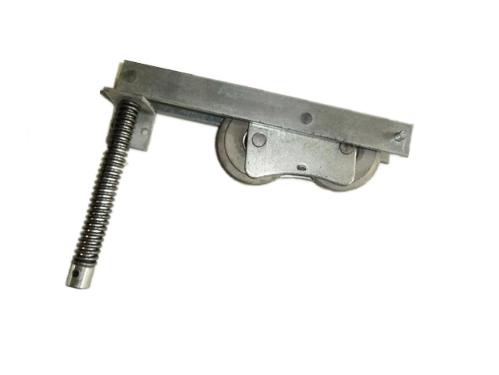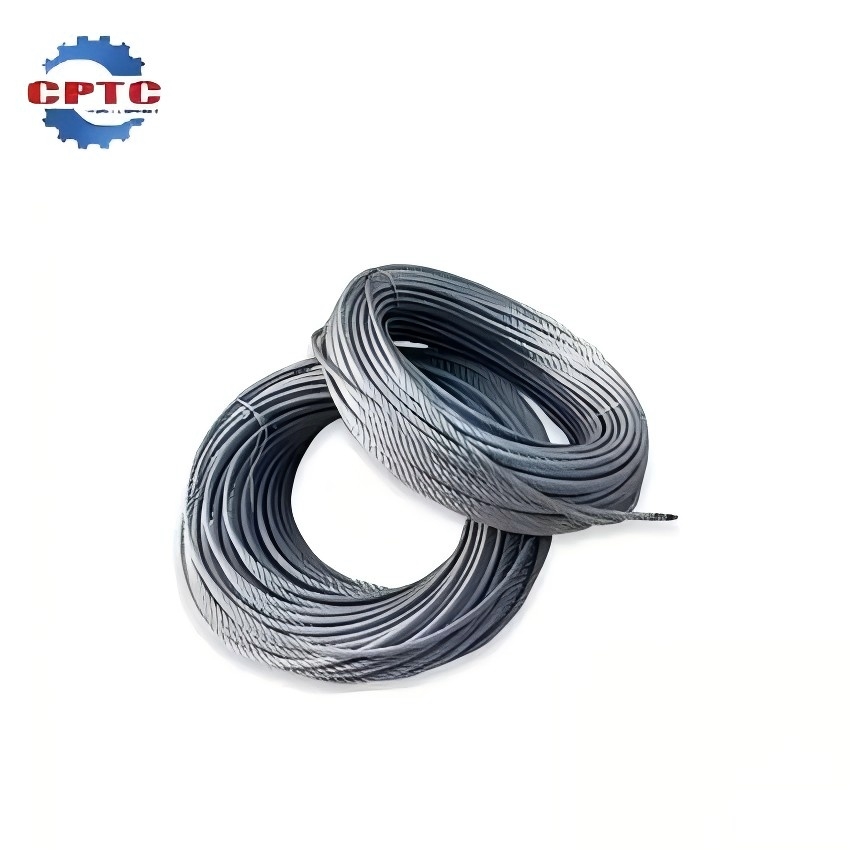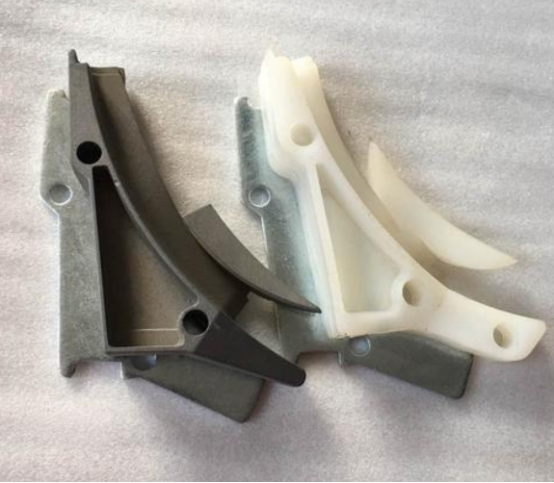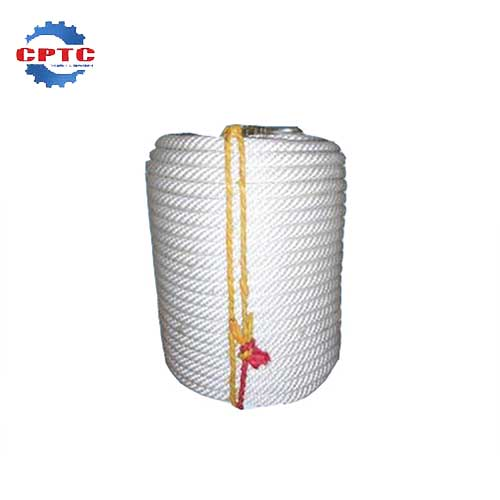Suspended platforms, often referred to as cradles, gondolas, or bosun’s chairs, are essential tools in various industries, including construction, building maintenance, and window cleaning. These platforms enable workers to access otherwise unreachable areas on the exterior of buildings, such as high-rise facades, bridges, and industrial structures.
Ensuring the utmost safety for workers is paramount when utilizing these platforms. Accidents can have severe consequences, including injuries and fatalities. This article aims to provide a comprehensive guide for safely operating suspended platforms, covering essential pre-operation checks, safe operating procedures, and post-operation guidelines. By adhering to these safety measures, workers can minimize risks and complete their tasks efficiently and securely.
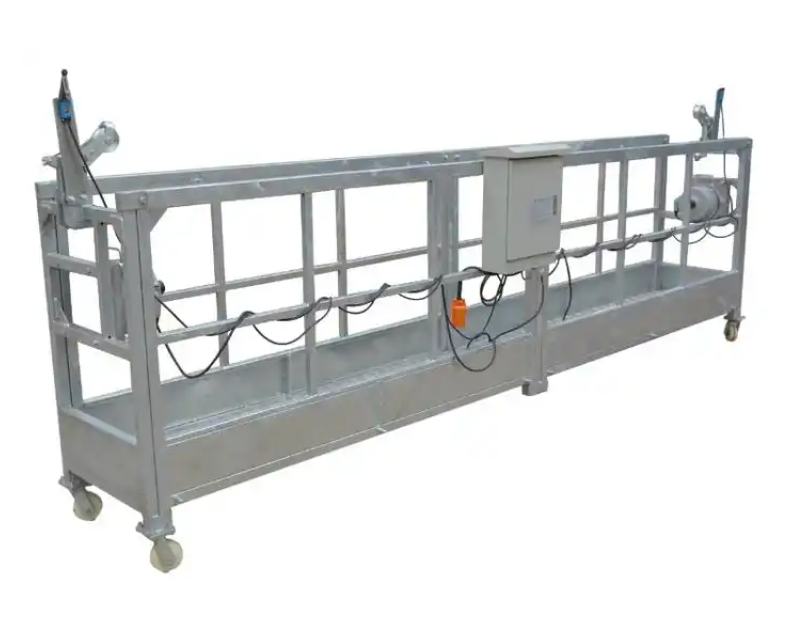
Pre-Operation Checks
Before commencing any work with a suspended platform, a thorough series of pre-operation checks must be conducted to ensure the safety of all personnel involved.
Platform Inspection:
Thorough Visual Inspection: A meticulous visual examination of the platform itself is crucial.
Check for any signs of wear and tear, such as cracks, tears, or corrosion on the platform’s structure.
Ensure all safety features are in proper working order. This includes inspecting and testing brakes, locks, and most importantly, safety ropes to confirm their functionality and integrity.
Suspension Cables and Rigging:
Carefully inspect all suspension cables and rigging for any signs of damage, including fraying, kinking, or any other visible defects.
Verify that the platform is securely and properly attached to the building structure using appropriate anchoring points.
Equipment Checks:
Tool and Material Inspection: Inspect all tools and materials that will be used while working on the platform.
Secure Storage: Ensure that all tools and materials are properly secured to the platform to prevent them from falling and potentially injuring workers below. This can include using tool pouches, securing items with lanyards, or utilizing dedicated storage compartments within the platform.
Weather Conditions:
Wind Assessment: Assess wind speed and direction before and during operation.
Severe Weather Avoidance: Avoid operating the suspended platform in high winds or during severe weather conditions such as thunderstorms, heavy rain, or strong gusts. Inclement weather can significantly increase the risk of accidents and should be avoided whenever possible.
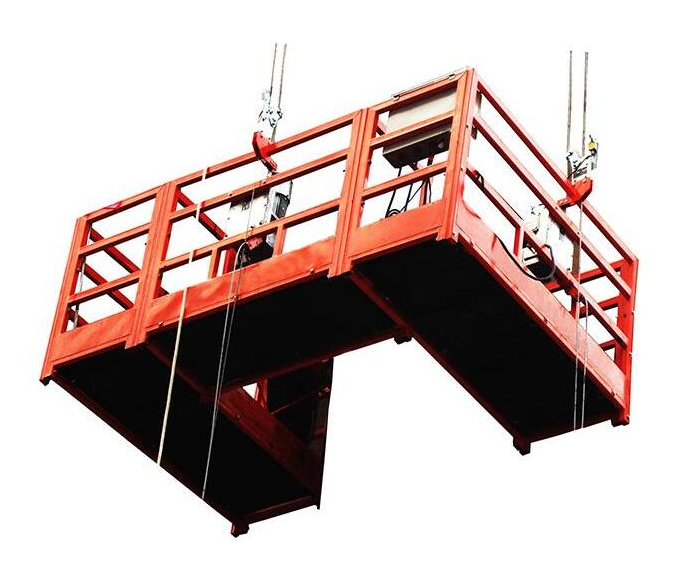
Safe Operating Procedures
Proper Attire
Essential Personal Protective Equipment (PPE): Always wear appropriate safety gear, including:
- Hard Hat: Protects the head from falling objects and potential impacts.
- Safety Harness: A crucial piece of equipment. The harness should be properly fitted and connected to a secure anchor point independent of the platform’s suspension system. This provides a lifeline in case of a fall.
- Gloves: Protect hands from abrasions, cuts, and contact with sharp edges or chemicals.
- Sturdy Footwear: Wear sturdy, non-slip boots to provide good footing and prevent slips and falls within the platform.
Platform Loading
- Weight Limits: Never exceed the platform’s weight capacity as indicated by the manufacturer. Overloading can compromise the platform’s stability and increase the risk of accidents.
- Even Weight Distribution: Distribute the weight of personnel and equipment evenly within the platform to maintain balance and prevent tipping. Avoid concentrating weight in one area.
Movement and Maneuvering:
- Smooth and Controlled Movements: Move the platform slowly and smoothly to avoid sudden jerks or stops. Sudden movements can disorient workers and increase the risk of falls or collisions.
- Clear Communication: Maintain clear and constant communication with ground personnel during all movements. Use hand signals or a two-way radio to coordinate movements and ensure everyone is aware of the platform’s position and intended direction.
Safety Rope Usage:
- Crucial Layer of Protection: This is a critical point. Always utilize a separate, independent safety rope attached to a secure anchor point completely independent of the platform’s primary suspension system.
- Fall Protection: This independent safety rope provides a crucial secondary layer of fall protection. In the event of a primary suspension failure, the safety rope will prevent a catastrophic fall.
- Proper Adjustment and Maintenance: Ensure the safety rope is properly adjusted and maintained throughout the entire operation. Regularly inspect the rope for any signs of wear and tear, and ensure it is always connected to a secure anchor point.
Emergency Procedures:
- Clear Communication Protocols: Establish clear and concise emergency communication procedures with ground personnel and any other relevant parties. This may include designated emergency contact numbers and pre-determined communication channels.
- Emergency Brake Activation: Workers must be thoroughly trained on how to activate emergency brakes and other safety systems in case of an emergency.
- Evacuation Plan: Develop and practice a well-defined evacuation plan in case of an emergency. This may include procedures for safely lowering the platform, utilizing emergency ladders, or other appropriate escape routes.
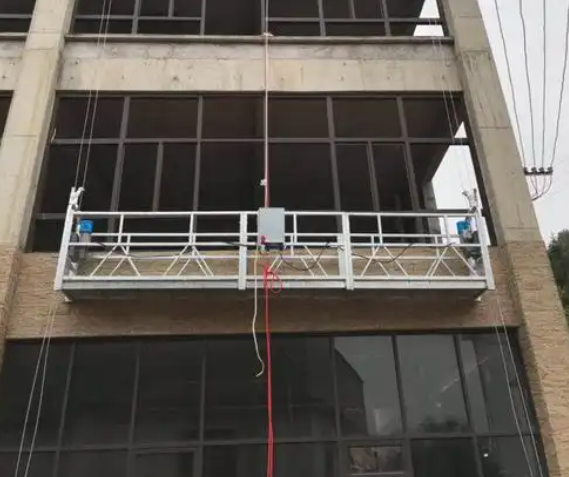
Post-Operation Procedures
Platform Retrieval:
- Controlled Descent: After completing the work, lower the platform slowly and carefully to the ground. Avoid sudden drops or jerky movements.
- Secure Storage: Once the platform has reached the ground, secure it properly to prevent accidental movement or tipping. Utilize appropriate restraints or anchoring points to ensure stability.
Equipment Storage:
- Proper Storage: Store all equipment, including tools, materials, and any other items used on the platform, in a safe and organized manner.
- Prevent Damage: Store equipment in a location that protects it from the elements (rain, sun, extreme temperatures) and prevents damage.
- Regular Maintenance: Regularly inspect and maintain all equipment to ensure it is in good working order before the next use.
Record Keeping:
- Detailed Records: Maintain accurate and up-to-date records of all inspections, maintenance activities, and any incidents that occur during platform operation.
- Inspection Records: Document all pre-operation and post-operation inspections, including the date, time, and any findings.
- Maintenance Records: Keep records of all maintenance performed on the platform, including repairs, replacements, and any other relevant information.
- Incident Reports: Document any incidents, accidents, or near misses that occur during platform operation. Include details of the incident, any injuries sustained, and corrective actions taken.
Importance of Record Keeping:
- Safety Improvements: Maintaining accurate records helps identify potential safety hazards and allows for the implementation of corrective actions to improve safety.
- Compliance: These records can also be used to demonstrate compliance with relevant safety regulations and industry best practices.
In conclusion, the safe operation of a suspended platform requires a multi-faceted approach encompassing meticulous planning, rigorous inspections, and adherence to strict safety protocols. From pre-operation checks and platform inspections to proper attire and emergency procedures, every aspect of the operation demands careful consideration. We can minimize risks and ensure the well-being of all personnel involved by prioritizing safety at every stage, from the initial setup to the final retrieval,
Construction equipment expert CPTC will continue to provide you with more related information.
Related Products
Rope Presser
Wire rope protection
Strengthens wire rope
Improves safety…
Wire Rope
High Tensile Strength and Durability
Compliance with Safety…
Nylon Splitter
Durable and Long-lasting
Safety Rope
Lightweight and Portable
Durable and Long-lasting

